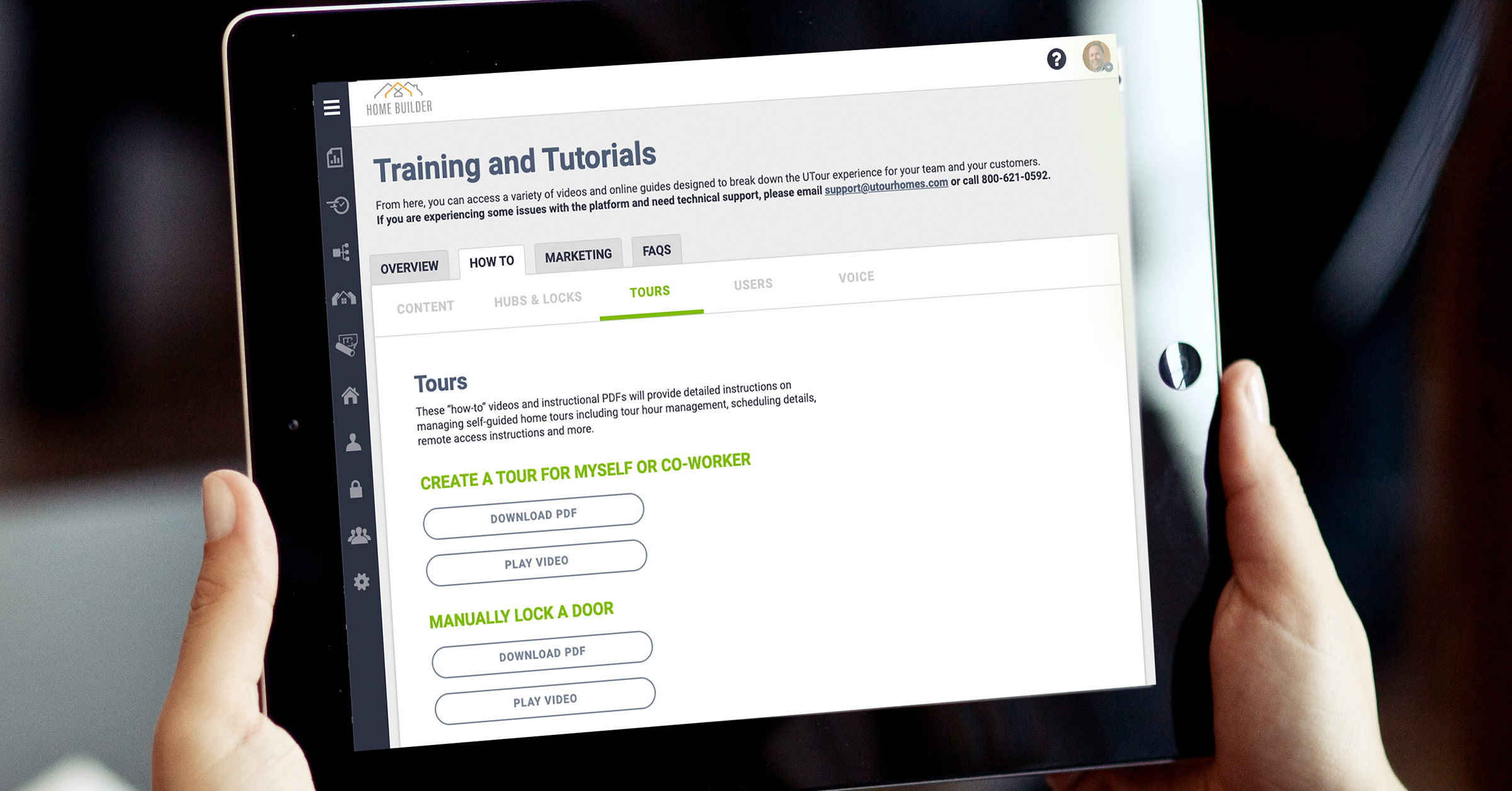The new home industry is continually evolving and embracing technology as homebuilders across the nation embrace offering self-guided tours of their models and inventory homes to generate more verified, quality leads, improve the home shopping experience and overcome staffing issues.
At UTour, we’ve helped guide builders large and small as they establish their internal processes for implementing self-tours into their new home sales process. UTour has helped over 100 homebuilders launch self-guided tours, generating over 13,000 hours of self-tours across the U.S. and Canada.
To get the most out of a self-touring program, we've compiled a list of the top five best practices that will help you maximize the potential of self-guided tours based on our platform data, numerous R&D efforts and feedback from our current clients.
1. Managing Consumer Expectations
To ensure a smooth and trustworthy experience for home shoppers during self-tours, it is essential to provide clear instructions on the registration process and what to expect during their visit. This includes offering support for those who may have difficulty registering. Being proactive and promptly addressing any issues that arise can help build trust with potential buyers and enhance their overall experience.
2. Proactively Market Self-Tours
To increase awareness and interest in self-guided tours, emphasize the convenience and unique experience they offer in your digital marketing campaigns such as social media and email. Highlight the benefits, such as the ability to tour at one's own pace and the flexibility to visit outside of traditional sales center hours. Utilize email marketing to reengage your dormant leads in your CRM and invite them self-tour your homes to determine if they’re still interested. Also, be sure to highlight your self-tour availability in your MLS listings to encourage agents to self-tour.
3. Create an Internal Champion
Assign a dedicated staff member to oversee the hardware installation process in collaboration with internal or external teams. This individual will handle registration issues, customer inquiries, and any technical difficulties that may arise. They will serve as the primary contact for both your internal teams and your self-tour service provider. For larger builders servicing multiple markets across various divisions, it's advisable to designate a champion for each division. This person will act as the direct liaison between your internal teams and your self-tour service provider, ensuring smooth communication and coordination.
4. Optimal Tour Times
To cater to your target audience's preferences, provide self-guided tours during popular times, such as Sunday afternoons, Saturday mornings, and Friday evenings. These periods typically attract the most potential buyers, enhancing the likelihood of generating leads and sales. Furthermore, consider offering self-tours on mid-week days when your sales managers are off, eliminating the need to staff model homes on weekdays with lower onsite visit volumes.
5. Smart Locks and Identity Verification
To accommodate markets with less tech-savvy target audiences, it may be beneficial to use push-button smart locks instead of electronic touchscreen locks. This can help minimize user error when entering access codes. Furthermore, for older home shoppers or those with privacy concerns regarding facial recognition applications, using a credit/debit card for identity verification can be considered an "easier" option than providing a driver's license.
By implementing these best practices, homebuilders can maximize the potential of self-guided tours to achieve several benefits, such as attracting more potential buyers, increasing customer satisfaction, and streamlining the sales process. By embracing the convenience and flexibility of self-tours, your company can provide a unique and personalized experience for home shoppers, giving you a competitive edge to generate more leads, save money, address onsite staffing issues, and attract more potential buyers.







